Name Issei Sagawa Date June 11, 1981 | Victims 1 Parents Sagawa Akira Height 153 cm (5.02 ft) Role Public speaker | |
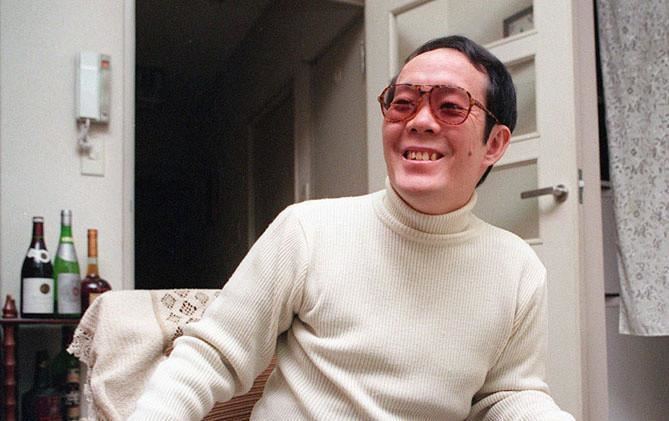 | ||
Criminal status Unfit to stand trial by reason of insanity Similar People | ||
Similar Armin Meiwes, Christine Chubbuck, Tamara Samsonova | ||
The Story Behind | THE PARIS CANNIBAL | Issei Sagawa
Issei Sagawa (佐川 一政, Sagawa Issei, born April 26, 1949) also known as Pang, is a Japanese criminal who in 1981, while in Paris, murdered and cannibalized a Dutch woman named Renée Hartevelt. After his release, he became a minor celebrity in Japan and made a living through the public's interest in his crime.
Contents
- The Story Behind THE PARIS CANNIBAL Issei Sagawa
- Early life
- Murder of Hartevelt
- Post release
- In popular culture
- References
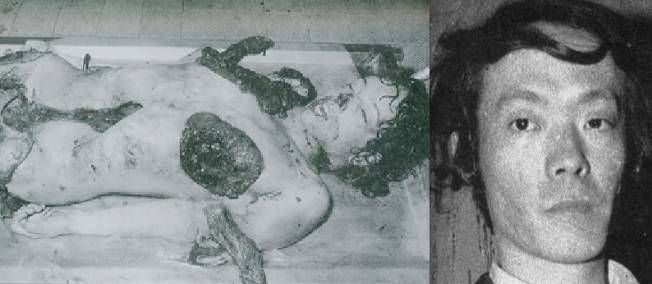
Early life
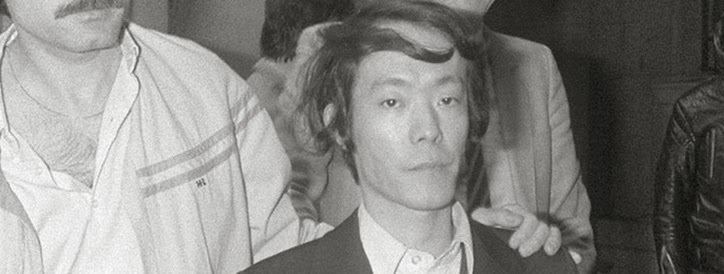
Sagawa was born in Kobe, Hyōgo Prefecture, Japan, to wealthy parents. He was born prematurely, reportedly small enough to fit in the palm of his father's hand, and was immediately afflicted with enteritis, a disease of the small intestine. He eventually recovered after several injections of potassium and calcium in saline.
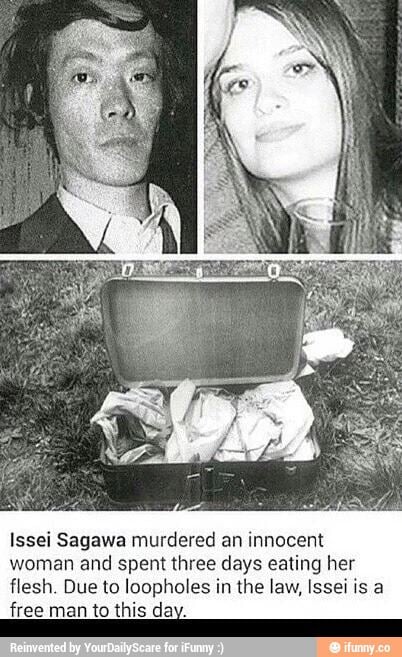
Sagawa first experienced cannibalistic desires while in the first grade, after seeing a male's thigh. In a 2011 interview with Vice, Sagawa reported that as a youth he partook in bestiality with his dog and experienced cannibalistic desires for women.
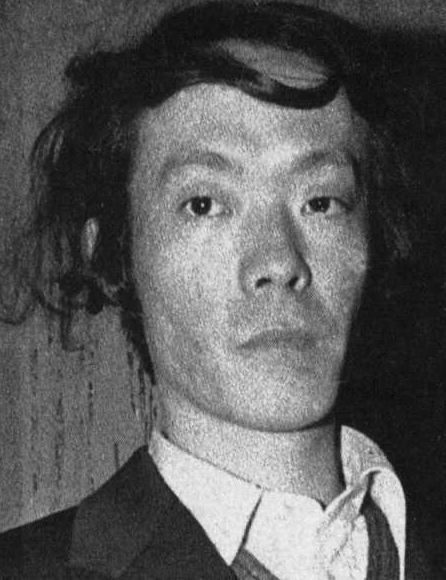
At 23, in Tokyo, Sagawa followed a tall German woman home, then broke into her apartment while she was sleeping with intent to cannibalize her by tearing and walking away with a small part of her flesh. She awoke and, Sagawa claims, pushed him to the ground. He was captured by police and charged with attempted rape. He did not confess his true intentions to authorities.
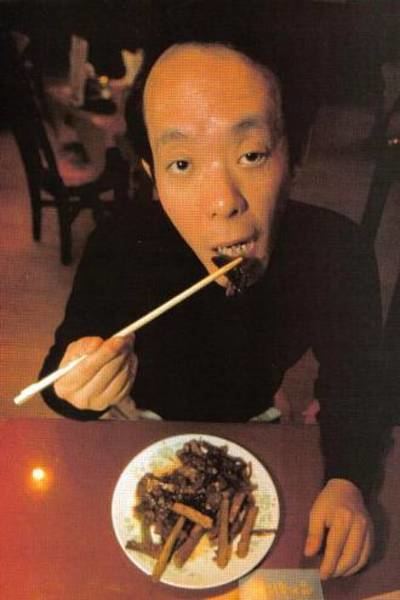
In 1977, at the age of 27, Sagawa emigrated to France to pursue a Ph.D. in literature at the Sorbonne in Paris. He claims that while residing in Paris, "Almost every night I would bring a prostitute home and then try to shoot them, but for some reason my fingers froze up and I couldn't pull the trigger."
Murder of Hartevelt
On June 11, 1981, Sagawa, then 32, invited his Sorbonne classmate Renée Hartevelt to dinner at his apartment under the pretext of translating poetry for a school assignment. He planned to kill and eat her, having selected her for her health and beauty; characteristics he believed he lacked. He describes himself as weak, ugly, and small (he is 1.52 m (5 ft) tall) and claims he wanted to absorb her energy. She was 25 years old and 1.78 m (5 ft 10 in). After she arrived, she began reading poetry at a desk with her back to him. He shot her in the neck with a rifle. Sagawa said he fainted after the shock of shooting her, but awoke with the realization that he had to carry out his plan. He raped her corpse but was unable to bite into her skin, so he left the apartment and purchased a butcher knife. For two days, Sagawa ate various parts of her body, saving other parts in his refrigerator. He then attempted to dump her body in a lake in the Bois de Boulogne, but was seen in the act and arrested by French police. When he was caught, he was carrying two suitcases. Those suitcases contained the dismembered body parts of Renée Hartevelt.
Sagawa's wealthy father provided a lawyer for his defense, and after being held for two years without trial Sagawa was found legally insane and unfit to stand trial by the French judge, Jean-Louis Bruguière, who ordered him held indefinitely in a mental institution. After a visit by the author Inuhiko Yomota, Sagawa's account of the murder was published in Japan under the title In the Fog. Sagawa's subsequent publicity and macabre celebrity likely contributed to the French authorities' decision to deport him to Japan, where he was immediately committed to Matsuzawa hospital. Examining psychologists there all declared him sane and found sexual perversion was his sole motivation for the murder. Because charges in France had been dropped, the French court documents were sealed and were not released to Japanese authorities; consequently Sagawa could not legally be detained in Japan. He checked himself out of the hospital on August 12, 1986, and remained free. Sagawa's continued freedom has been widely criticized.
Post-release
Between 1986 and 1997 he was frequently invited to be a guest speaker and commentator. In 1992, he appeared in Hisayasu Sato's exploitation film Uwakizuma: Chijokuzeme (Unfaithful Wife: Shameful Torture) as a sado-sexual voyeur. Sagawa has written books about the murder, as well as Shonen A, a book on the 1997 Kobe child murders. He has also written restaurant reviews for the Japanese magazine Spa. Sagawa can no longer find publishers for his writing and he has struggled to find employment. He was nearly accepted by a French-language school because the manager was impressed by his courage in using his real name, but employees protested and he was rejected.
In 2005 Sagawa's parents died. He was prevented from attending their funeral, but repaid their creditors and moved into public housing. He received welfare benefits for a time. In an interview with Vice magazine in 2011, he said that being forced to make a living while being known as a murderer and cannibal was a terrible punishment.
In popular culture
Verena Paravel and Lucien Castaing-Taylor co-produced the latest film about Sagawa, "Caniba" which was shown at the 2017 Venice and Toronto International Film Festivals to mixed reviews from the public.
